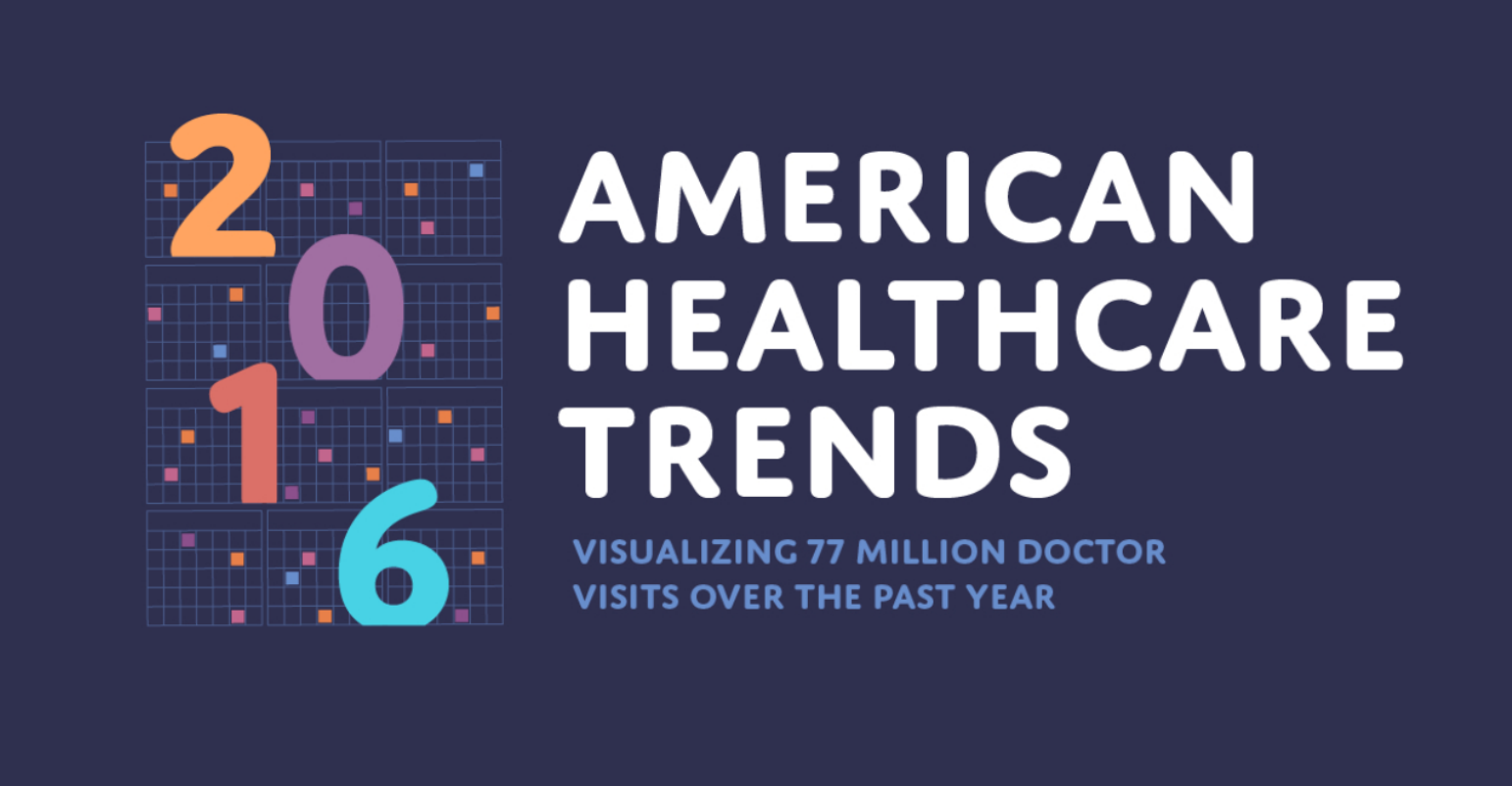Every day in the United States, hundreds of thousands of people see a doctor. These visits can be routine, life-changing, stressful, costly-or all of the above.
Amino's insurance claims database, which covers nearly every doctor in the country, gives us unique insight into when, where, and how Americans receive care. Over the past year, we saw 77 million doctor visits-that's 29 million patients who went to more than 681,000 doctors.
These are some seriously big numbers, and they tell very interesting stories-stories about pediatric care, women's reproductive health, medical emergencies, and aging. To visualize this, we broke out the visits by age group and doctor specialty. Below I've outlined some of the most compelling trends.
When do you outgrow pediatric care?
Think back to the first doctor you remember seeing-chances are it was a pediatrician. For kids 9 and under, the majority of doctor visits are with pediatricians. No surprises there. This is also the only age group where males visited the doctor more than females. (More on that later.)


We found that pediatric care doesn't end with children. Roughly 3% of doctor visits among patients age 20-29 were with pediatricians, and a tiny sliver of patients in all age groups see pediatricians. This may be due to situations where it's convenient for people to stick with their pediatrician well into adulthood, like in rural areas where access to a doctor may be limited. Earlier this year, the New York Times wrote about how a growing number of pediatricians are willing to keep their older patients.
Women went to the doctor more than men
When you look at all 77 million doctor visits, a striking pattern starts to emerge: women went to the doctor a lot more than men. This is especially true for women in their 20s.
Much of this difference comes from visits with OB/GYNs-in fact, women age 20-29 visited OB/GYNs almost as much as men saw any type of doctor! Women are also seeing primary care (family practitioners, internists, and pediatricians) and emergency medicine doctors more often than men. According to a Kaiser Women's Health survey, 91% of women said they've seen a doctor in the past 2 years; only 7 5% of men said the same.

Emergency! Emergency!
Emergency medicine doctors-doctors who specialize in unscheduled, unspecified care and tend to work in emergency rooms and urgent care centers-are responsible for many medical visits in the U.S. 20-somethings went to emergency medicine doctors more than any other age group.
When we analyzed flu diagnoses, we found that emergency medicine doctors were responsible for 52% of all diagnoses in our database. But for 20-29 year old patients, emergency medicine doctors were responsible for 64% of diagnoses!
Healthcare gets more specialized as we age
As we age, healthcare gets more specialized. People in their 50s, 60s, and 70s see a wider variety of doctors than any other age group. These include cardiologists, hematologists, gastroenterologists, urologists, ophthalmologists, and oncologists. Another thing that happens as people get older? The difference between the number of doctor visits for women and men decreases.



What can we expect in 2017?
As we look to the new year, many of us see change and uncertainty on the horizon. American healthcare is expensive, confusing, and often inaccessible. As patients, a lot of our own healthcare outcomes are beyond our control.
Factors like where we live and work, what type of insurance we have, and how much money we can spend on prescription drugs all can make a huge difference as to whether or not we live healthy, happy, and productive lives. Much is at stake for people who live on the margins women in low income families, people of color, the LGBTQ community, and many others.
At Amino, we are working to bring transparency to American healthcare through our product and data stories. We have a lot in store for 2017. As our CEO David Vivero said after the election, Amino will continue to "advocate aggressively and openly to support policies for broad healthcare access, reduction of unnecessary costs and waste, and acceleration toward greater quality and patient safety."

Methodology
We looked at every doctor/patient interaction in our health insurance claims database that occurred between October 1, 2015 and September 30, 2016. We defined a 'doctor visit' as a distinct combination of patient, doctor, and day. For example, if a patient visited the same doctor 4 times ( on 4 separate days) in the past year, we considered that to be 4 visits.
The specialties we called out in the visual-pediatricians, family practitioners, internists, emergency medicine doctors, and gynecologists -accounted for 67% of all doctor visits during our timeframe of analysis, and represent the top 5 specialties by volume of patients. If a doctor holds multiple specialties, only their primary specialty was considered in this analysis.
Analysis by Sohan Murthy



